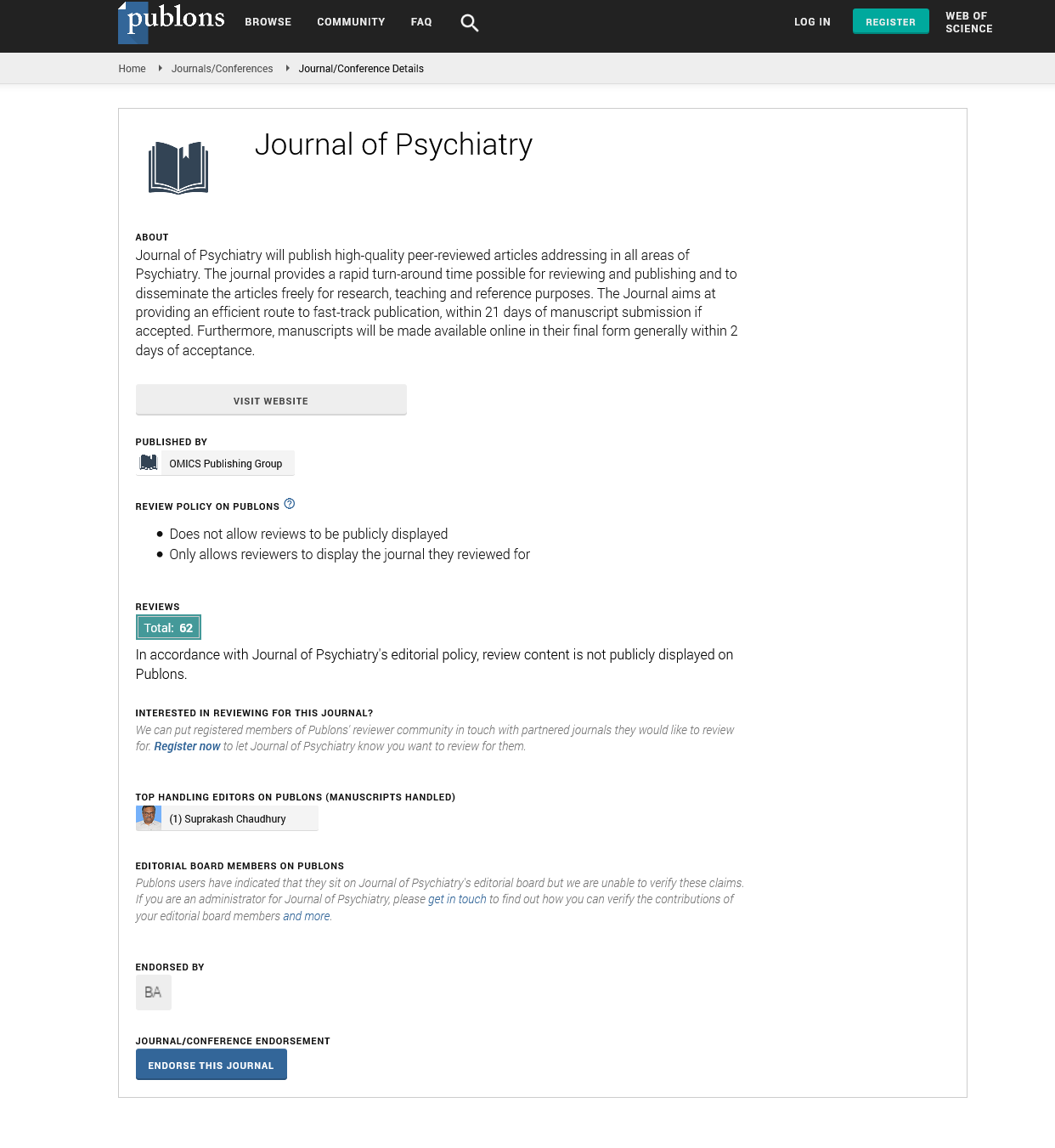Indexed In
- RefSeek
- Hamdard University
- EBSCO A-Z
- OCLC- WorldCat
- SWB online catalog
- Publons
- International committee of medical journals editors (ICMJE)
- Geneva Foundation for Medical Education and Research
Useful Links
Share This Page
Open Access Journals
- Agri and Aquaculture
- Biochemistry
- Bioinformatics & Systems Biology
- Business & Management
- Chemistry
- Clinical Sciences
- Engineering
- Food & Nutrition
- General Science
- Genetics & Molecular Biology
- Immunology & Microbiology
- Medical Sciences
- Neuroscience & Psychology
- Nursing & Health Care
- Pharmaceutical Sciences
Antipsychotic Polypharmacy
Euro Global Summit and Medicare Expo on Psychiatry
July 20-22, 2015 Barcelona, Spain
Juan A Gallego
Posters-Accepted Abstracts: J Psychiatry
Abstract:
The concurrent use of two or more antipsychotics also called Antipsychotic Polypharmacy (APP) is a common practice in the treatment of psychiatric patients. In a systematic review of 147 studies published in the literature, we found a global median rate of APP of 19.6%. Differences in APP rates were noted across geographical regions. Overall, APP rates were higher in Asia and Europe compared to North America. Additionally, when looking at changes in APP rates over time in individual regions, we found that median APP rate increased in North America from 12.7% in 1980s to 17% in 2000s. Conversely, the median APP rate in Asia decreased from 55.5% in 1980s to 19.2% in 2000s. However, in spite of the common use of APP, very few randomized controlled studies have been conducted and most of the data found in the literature derives from uncontrolled naturalistic studies and chart review studies. Therefore, the evidence base to support the use of APP as standard treatment is lacking. To date, APP has been associated with a large host of factors that could be grouped into patient, illness and treatment domains. Examples of patient factors include being a male, younger age and unmarried status. In regards to illness factors, a diagnosis of Schizophrenia or Schizo affective disorder, earlier onset of illness, longer illness duration, greater illness acuity or severity and others have been associated with APP. Examples of treatment factors include involuntary treatment, hospitalization, longer inpatient stay, longer treatment duration, higher dosing, receiving quetiapine treatment and others. Besides treatment efficacy, the risk of side effects is another factor that needs to be taken into account when evaluating a new treatment strategy. To study the adverse effects associated with APP, we conducted another systematic review and found reports of a large variety of adverse effects that have been linked to APP. In general and based on mostly uncontrolled data, APP is associated with worse adverse effects when compared to antipsychotic monotherapy. Although, we found that specific combinations seem to be beneficial for the treatment of specific adverse effects such as the addition of aripiprazole to clozapine to decrease weight gain and dyslipidemia. Further data in regards to prevalence, correlates and adverse effects of APP will be discussed in the presentation.

